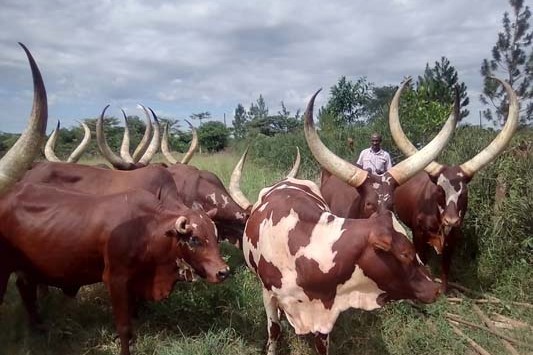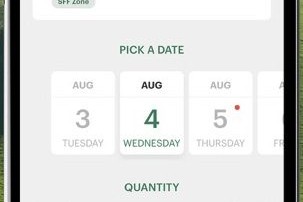
By: Karen Trebilcock
If nothing else, you should know your dairy breeds, but do you know where they all come from and why we have them?
In 1814, Samuel Marsden imported the first dairy cows to New Zealand. They were Shorthorns, a bull and two cows and came from the New South Wales crown herd, a gift from Governor Lachlan Macquarie.
By the 1840s, most European settlements throughout the country had them for their milk, meat and their ability to pull heavy loads.
The breed comes from northeast England where the Durham and Teeswater cattle were crossed in the late 1700s.
By 1880 there were some 500,000 cattle in NZ and most of them were shorthorns. But the Scots wanted their own cattle and in 1848, the first Ayrshires arrived on the Philip Laing at Port Chalmers near Dunedin. An Ayrshire cow, also on the ship, had died on the way. Ayrshires were first known as Cunninghams, then Dunlops and finally the Ayrshire name was adopted from their home, the County of Ayr in Scotland.
They were bred during the 1700s from native cattle which were crossed with other breeds including the Teeswater. Most of these first cattle were black, but the browns and mottled colours the breed is known for started to appear by 1775.
In Taranaki, however, they wanted the Jersey cow. NZ’s first pedigree Jerseys were two cows and a bull brought to Whangauni by Thomas Syers in 1862.
From Jersey, one of the British Channel Islands, the breed probably came from nearby France and it was first recorded in 1700. Canterbury breeder JCH Grigg was the first to import Dutch Friesian cattle into NZ in 1884. Named after the Western Friesland region in the Netherlands, they were bred using black cattle from Batavians (Germany) and white animals from Friesland. They are also known as Holstein Friesian with the name Holstein more used in North America.
The early NZ herd was bolstered with American Holstein bloodlines in 1902. Soon farmers supplying fresh milk sought out the Friesian breed wanting their ability to produce large volumes while those supplying milk for butter and cheese favoured Jerseys.
Breed societies were set up and winning ribbons and cups at shows became important. Selling pedigree cattle supplemented farm incomes and maintained the individual breeds.
It was often done by what is called line breeding which is the breeding of close relatives (half-brother to half-sister) to lock in desirable traits.
All these breeds were developed using it. On the island of Jersey, from 1789 to 2008, it was forbidden by law to import foreign cattle just so the purity of the Jersey breed could be assured.
However, in NZ in the 1990s, we started doing things a little differently. Friesian cattle were getting bigger, Jerseys were getting smaller and were not handling our winters and the flurry of conversions brought new people and new ideas into the industry.
We started crossing the two breeds.
The reasoning farmers gave, if they were asked, was hybrid vigour. It’s the opposite to line breeding and the idea is, by crossing two unrelated breeds, we will get the best of both and a little bit more.
A breed loses genetic diversity over time, known as inbreeding depression. It’s probably why those Durham and Teeswater cattle were first crossed in Northeast England in the 1700s.
Last decade, genetics companies started offering the cross, especially as the daughters were outperforming many of the daughters of their best Friesian and Jersey bulls. The black cow became popular.
So much so, crossbred cows now make up the largest portion of the national dairy herd at 49.1% (NZ Dairy Statistics 2019-2020) and, according to LIC, about 80% of the calves born this year will be crossbred, either from matings using crossbred semen or from Jersey semen used over Friesians or vice versa.
However, the cross is not stabilised. The desired all-black F10 J6 cow cannot be reproduced every mating, meaning farmers are switching between crossbred, Jersey and Friesian as their herds become too Friesian or too Jersey.
LIC, suppliers of the trademarked Kiwicross genetics, don’t even intend to stabilise it – instead continually using the two parent breeds for their bulls to make sure hybrid vigour is maintained.
But for some farmers, two crosses are not enough and a third is the way to go.
Bring in the Viking Red, the Fleckvieh, Norwegian Red, Montbéliarde, Normande and Abondance.
While there was no one controlling what cattle breeds came into the country in the 1800s, the government soon put a stop to such farmer meddling.
Fifty years ago, the Department of Agriculture’s breeding and genetics experts decided what breeds were required.
The “wholesale importation of exotic breeds merely because some other country has found them useful is not necessarily the way to go to progressively improve New Zealand’s animals,” the Minister of Agriculture said at the time.
Back then breed importers had to use the government’s maximum-security animal quarantine complex on Somes Island in Wellington harbour. Now, using MPI standards, we fly in frozen straws of semen.
As well as providing more hybrid vigour, European breeds such as Viking Reds also have the benefit of decades of breeding in countries unable to use hormone interventions to cycle cows or the blanket use of antibiotics to control mastitis.
Because of this, they can claim their genetics have higher fertility and a proven greater resistance to disease.
Many also have connections to beef breeds so are sought after by Kiwi farmers because they produce a more versatile calf than a Jersey or Jersey cross.
Fleckvieh comes from the yellow-coloured bulls of the Swiss Simmental region and the red-and-white-spotted Austrian cattle.
The Normande comes from Normandy in northern France but date back to the cattle brought there from Scandinavia by the Vikings in the ninth century. Today they are farmed for cheese making and beef.
Until the early 1990s they were ranked second in the French national dairy herd (Holstein is number one) until they were overtaken by the Montbéliarde which used to be known as Alsatian cattle due to their connection to the German and Dutch-speaking parts of Europe.
Modern Montbéliarde are a composite of the breeds Tourache, Bernoise and Red Holstein.
Viking Reds are a cross of the Swedish Red, Finnish Ayrshire and Danish Red dairy breeds.
Lastly, Abondance were bred by the monks of the Abbey of Saint-Maurice d’Agaune in Switzerland in the 12th century. They were originally known as Chablaisienne cattle.
But if NZ farmers want to stray further, there are Asian and African regions that have also developed their own dairy breeds such as the Sahiwal which has been used for dairy production in tropical parts of Australia.
Just a thought as you start mating this season.





